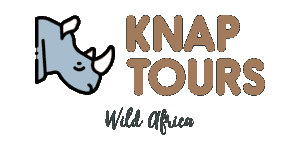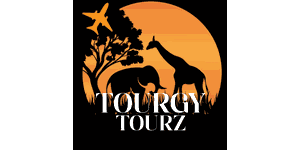Tour Length
Rates in USD $ – Change Currency
Per person, excl. international flightsOperator Rating
Other Tour Features
Filter by Operator
Filter by Accommodation
2-Day Kruger Safari Tours
If you’ve ever dreamed of seeing lions, elephants and other African creatures in their natural habitat, you won’t want to miss out on Kruger. This is South Africa’s largest national park and most popular safari destination, extending across 19,485km²/7,523mi² of bush country inhabited by a diverse array of wildlife. Kruger supports substantial populations of all the Big Five (lion, leopard, elephant, rhino and buffalo) along with other safari favorites such as giraffe, zebra, wildebeest, warthog and cheetah. And while you may not get to see all of these iconic African animals on a 2-day Kruger safari, you’ll surely see most of them, along with a host of antelope, birds and other fascinating creatures.
-

2-Day Kruger Safari from Cape Town
$1,023 to $1,155 pp (USD)
South Africa: Shared tour (max 10 people per vehicle)
Mid-range LodgeYou Visit: Cape Town (Start), Kruger NP, Cape Town (End)

Africa Moja Tours & Safaris
5.0/5 – 29 Reviews
-
Best Seller

2-Day Luxury Radisson Kruger Safari
$686 pp (USD)
South Africa: Shared tour (max 10 people per vehicle)LuxuryHotel
You Visit: Johannesburg (Start), Greater Kruger, Kruger NP, Johannesburg (End)

MoAfrika Tours
4.9/5 – 4,154 Reviews
-

2-Day Night Drive & Bush Walk Safari in Kruger Exclusive
$915 pp (USD)
South Africa: Private tourLuxuryLodge
You Visit: Johannesburg (Start), Kruger NP, Johannesburg (End)

Mmilo Tours
5.0/5 – 142 Reviews
-

2-Day Exclusive Kruger Safari – Big Five & Luxury Lodge
$1,170 to $1,184 pp (USD)
South Africa: Shared tour (max 6 people per vehicle)LuxuryLodge
You Visit: Johannesburg (Start), Kruger NP, Johannesburg (End)

Knap Tours
5.0/5 – 28 Reviews
-
![2-Day In Kruger National Park]()
2-Day In Kruger National Park
$844 pp (USD)
South Africa: Private tour
Mid-range HotelYou Visit: Johannesburg (Start), Kruger NP, Johannesburg (End)

Tourgy Tourz
4.9/5 – 41 Reviews
-
![2-Day Kruger Safari from Johannesburg]()
2-Day Kruger Safari from Johannesburg
$462 pp (USD)
South Africa: Shared tour (max 10 people per vehicle)
Mid-range LodgeYou Visit: Johannesburg (Start), Kruger NP, Johannesburg (End)

Africa Moja Tours & Safaris
5.0/5 – 29 Reviews
-
Top Rated Operator

2-Day Kruger Glamping Budget Safari
$461 pp (USD)
South Africa: Shared tour (max 10 people per vehicle)BudgetTented Camp
You Visit: Johannesburg (Start), Central Kruger NP, Johannesburg (End)

MoAfrika Tours
4.9/5 – 4,154 Reviews
-
![2-Day Luxury Kruger Safari – Big Five Adventure]()
2-Day Luxury Kruger Safari – Big Five Adventure
$1,080 to $1,093 pp (USD)
South Africa: Shared tour (max 6 people per vehicle)LuxuryHotel
You Visit: Hoedspruit (Start), Greater Kruger, Kruger NP, Hoedspruit (End)

Knap Tours
5.0/5 – 28 Reviews
-
![2-Day Budget Kruger NP Safari from Johannesburg]()
2-Day Budget Kruger NP Safari from Johannesburg
$482 to $624 pp (USD)
South Africa: Private tour
Mid-range LodgeYou Visit: Johannesburg (Start), Kruger NP, Johannesburg (End)

Africa Moja Tours & Safaris
5.0/5 – 29 Reviews
-
Top Rated Operator

2-Day Sekekama Tented Camp Safari
$461 pp (USD)
South Africa: Shared tour (max 10 people per vehicle)BudgetTented Camp
You Visit: Johannesburg (Start), Greater Kruger, Central Kruger NP, Johannesburg (End)

MoAfrika Tours
4.9/5 – 4,154 Reviews
-
Best Seller
![2-Day Kruger Adventure Safari]()
2-Day Kruger Adventure Safari
$493 pp (USD)
South Africa: Shared tour (max 10 people per vehicle)BudgetLodge
You Visit: Johannesburg (Start), Southern Kruger NP, Johannesburg (End)

MoAfrika Tours
4.9/5 – 4,154 Reviews
-
Top Rated Operator

2-Day Luxury Ivory Moon Kruger Safari
$659 pp (USD)
South Africa: Shared tour (max 8 people per vehicle)LuxuryLodge
You Visit: Johannesburg (Start), Kruger NP, Johannesburg (End)

MoAfrika Tours
4.9/5 – 4,154 Reviews
-
Top Rated Operator

2-Day Kruger Dumela Camping Adventure
$517 pp (USD)
South Africa: Shared tour (max 10 people per vehicle)BudgetTented Camp
You Visit: Johannesburg (Start), Kruger NP, Johannesburg Airport (End)

MoAfrika Tours
4.9/5 – 4,154 Reviews
-
Tour Operators Offering Custom Tours
Didn’t find the tour you were looking for? Get a free quote for a custom tour from the tour operators below. They can arrange private tours to any destination in South Africa.
5 Questions About 2-Day Kruger Safaris

Answered by
Philip Briggs
Philip Briggs is an Africa-specialized travel writer who grew up and lives in South Africa. He first visited Kruger as a child in the 1970s, and has explored its every accessible corner on countless subsequent visits.› More about Philip
5 Questions About 2-Day Kruger Safaris
 Philip Briggs
Philip Briggs
Is 2 days enough time for a trip in Kruger National Park?
“Two days is sufficient for a Kruger safari, but it’s on the short side. If you’re unable to spend longer in Kruger, then a 2-day safari is well worth doing. If you can allocate an extra day or 2, however, we would recommend this. The main reason why longer is better is that animals don’t line up waiting for visitors, so there’s a large element of luck on any given game drive. So while you’ll see a good selection of African wildlife on a 2-day Kruger safari, every additional day in the park improves your chances of seeing everything you’d like to see. If your 2-day safari leaves from Johannesburg, then bear in mind that it’ll be five hours’ drive to the closest entrance gate. Thus you’ll spend your first morning and second afternoon of the tour in transit. If starting in Hazyview, Hoedspruit or another place close to the park, 2 days feels less tight, as both days can be dedicated exclusively to wildlife viewing. Also worth noting, Sabi Sand Game Reserve and other private game reserves bordering Kruger offer a more intense wildlife-viewing experience than the park itself. So if you have time restrictions but want to give yourself the best chance of seeing all the Big Five, consider booking a safari in a private reserve rather than Kruger itself.”
1What are the accommodation options?
“Kruger has accommodation options to suit most tastes and budgets. The main form of accommodation within the park are state-run rest camps with a variety of relatively affordable self-catering huts and bungalows. Most rest camp units have en suite bathrooms and toilets, but some cheaper huts use communal ablution blocks. Most rest camps also have campsites where you can pitch your own tent. If you feel like self-catering, a popular option is barbecuing, and most of the rest camps have shops where you can buy meat and other basics. Some of the larger rest camps have restaurants, too. Many Kruger safaris use a base outside the park, in or around towns such as Malelane, Mbombela, Hazyview and White River. These options are more varied than the rest camps, in terms of both quality and style, and they include everything from relaxed backpacker lodges to smart boutique hotels. A disadvantage of staying outside the park is that you’ll be less well positioned for early morning game drives. At the very top end of the scale, a number of small five-star lodges are situated in private concessions within the park or in private reserves that share an unfenced border with it. These exclusive lodges generally offer the ultimate upmarket safari experience, including stylish Africa-themed accommodation, attentive service, and world-class wining and dining. These are also usually inclusive of guided game drives in open vehicles, in areas that are closed to the general public.”
2Which animals am I likely to see on a 2-day Kruger safari?
“Animals you’re almost certain to see on any Kruger tour include buffalo, hippo, giraffe, crocodile and zebra. More than a dozen antelope species are present, most conspicuously wildebeest, waterbuck, greater kudu and the ubiquitous impala. On a 2-day Kruger safari, you’re also likely to see elephants, which tend to be especially common around rivers and waterholes. With a bit of luck you should also see white rhino and lion, though neither are guaranteed. Other predators to look out for include leopard, cheetah and African wild dog, all of which fall into the category of lucky as opposed to likely sightings. Kruger hosts one of the world’s largest remaining populations of black rhino, but these secretive animals are seldom seen. Don’t forget to keep an eye open for the small stuff. Kruger is home to a great variety of lizards, as well as iconic invertebrates such as the dung beetle and praying mantis. A striking feature of the park is its varied birdlife, which comprises more than 500 species. These include the oversized ostrich and Kori bustard, a variety of predatory eagles and hawks, the vultures that flock around fresh kills, and a host of colorful weavers, sunbirds and rollers.”
3How much will this safari cost?
“The price of a 2-day Kruger safari package is quite variable, and depends mainly on the sort of accommodation and experience you choose. For budget to mid-range 2-day safaris using rest camps or lodge accommodation outside the park, you should pay in the ballpark of US$450 to US$500 per person sharing. The price of a lodge-based tour in a private reserve or concession is likely to be upwards of US$700 per person, for which you can expect a more luxurious experience and a far better chance of ticking off all of the Big Five.”
4What can I expect from a 2-day Kruger safari?
“Most 2-day Kruger safaris start in Gauteng, a province that incorporates Johannesburg, Pretoria and O.R. Tambo International Airport. It takes about five hours to drive to Kruger, excluding stops, so expect an early start (around 7am or earlier) in order to be there by lunchtime. You’ll almost certainly go on an afternoon game drive, ideally starting at least three hours before sunset, to look for elephants, lions and other wildlife. If you’re staying at a rest camp inside Kruger, you’ll need to be back in camp roughly at sunset (gate closing times vary from month to month and are posted on the camp gates). The situation is similar if you’re heading to a lodge or hotel outside the park. By contrast, game drives run by lodges in concessions and private reserves are allowed to stay out after dark, so the ritual here is to stop for sundowners, then go in search of nocturnal creatures such as leopards, bush babies and genets. Organized guided night drives are also offered at most rest camps within the park, and it’s well worth joining one, even if it’s not on your itinerary. Wildlife is most active in the early morning, so on your second day, aim to set off on a game drive as early as rules permit. This is when you’re most likely to catch lions and leopards on the prowl, or lying on the road. It is also usually when photographic light is at its best. After three or four hours, you’ll be ready for a late breakfast or brunch, before starting the drive back to Gauteng.”
5Kruger Reviews

Mike is an award-winning wildlife writer, former editor of Travel Zambia magazine and author of the Bradt Guide to Southern African Wildlife.
Africa’s Best DIY Safari
South Africa’s premier wildlife reserve divides opinion. Some who’ve visited supposedly ‘wilder’ parks argue that the Kruger’s developed infrastructure, complete with paved roads and large public camps, undermines the wilderness...

Lizzie is a reputed guidebook writer and author of the Footprint guides to South Africa, Namibia, Kenya, Tanzania, Uganda and Zimbabwe.
South Africa’s flagship park with excellent facilities and unrivalled game-viewing
South Africa’s largest park most certainly fulfils most visitors’ expectations of seeing magnificent herds of game roaming across acacia-studded savannah. After countless visits at different times of the year, I have found it can get a...
I though we would need binocculars to see most animals, but I was wrong. So many animals, so close to us, just dling their thing. We spent 3 nights in Kruger Park and 1 in Sungula, which was perfect. Kruger had alot, but we were not able...
On several occasions we saw the big five as well as many other beautiful animals. We enjoyed the fact that these animals are protected and hope that tourism will bring in more money to support employment of South Africa’s people.
 ES
ES
MAGICAL
I have just returned from my amazing trip into the Delta with Sarari Addicts , a small company based in Maun.The Delta is a vast and varied area .I went on a three day 2 night camping trip.on the 2 hour , longer if there are sightings...
I still give 5 stars even if we only saw lion from far away In the Leopard just quickly in the evening No cheetahs But I must say because of the rain in the previous few months before our travel, the bush was too green, so it was more...




_1269_6639defdeaef4.960x480-36.jpeg)








